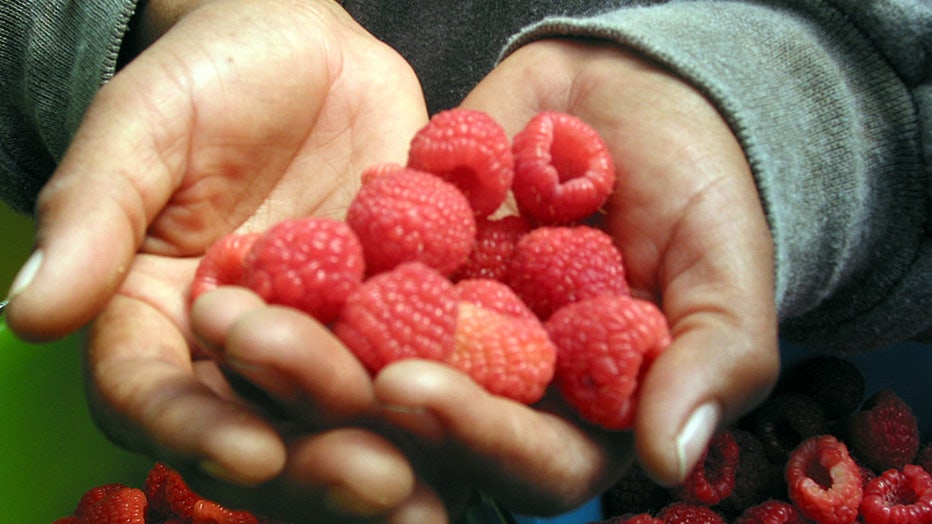Cyclospora: What is it and where does it come from?

What is Cyclospora?
Cyclospora cayetanensis is a parasite that causes an intestinal infection called cyclosporiasis, or Cyclospora.
Cyclosporiasis, also known as Cyclospora, is an intestinal illness that is caused by a microscopic parasite called Cyclospora cayetanensis, according to the Centers for Disease Control and Prevention.
A person can become infected with Cyclospora after ingesting either food or water that has been contaminated with fecal matter.
The presence of the parasite that leads to a Cyclospora infection is actually rare in the United States, according to the Cleveland Clinic. Much of the time, if an infection occurs within the U.S., it is largely because someone ingested contaminated produce that was imported from an area where the parasite is common.
RELATED: Cyclospora cases on the rise in Harris County

FILE - Raspberries held in a worker’s hands. (Kevin G. Hall/MCT/Tribune News Service via Getty Images)
What is Cyclospora cayetanensis?
Cyclospora cayetanensis is a parasite that is made up of only one cell, according to the CDC, so it is too small to be seen without a microscope.
If ingested, this parasite can lead to an intestinal illness known as cyclosporiasis or Cyclospora.
How is Cyclospora spread?
Once a person has been infected with Cyclospora, it takes at least one to two weeks for it to pass through a person’s digestive system. Once it’s passed, only then may it become infectious for another person to contract it, but it’s highly unlikely.
The likelihood of someone passing off the infection to another person is rare.
It is far more likely that someone will become infected with Cyclospora after ingesting contaminated produce or water.
What types of produce have been linked to Cyclospora?
In the past, fresh produce such as raspberries, basil, snow peas, mesclun lettuce and cilantro have been linked to outbreaks of Cyclospora in the U.S., according to the CDC.
No frozen or canned produce has been linked to such cases.

FILE - Basil leaves in a greenhouse. (Klaus-Dietmar Gabbert/picture alliance via Getty Images)
Where is Cyclospora cayetanensis the most common?
Cyclospora cayetanensis is commonly found in tropical or subtropical regions.
Cyclospora illnesses in the U.S. are often linked to foods that were imported.
What are the symptoms?
It takes a person about one week to start feeling sick after becoming infected with Cyclospora, according to the CDC.
The Cyclospora will infect the small intestine and lead to diarrhea with frequent and sometimes explosive bowel movements.
Other common symptoms include:
- Loss of appetite
- Weight loss
- Stomach cramps/pain
- Bloating
- Increased gas
- Nausea
- Fatigue
Other common extreme symptoms include:
- Vomiting
- Body aches
- Headache
- Fever
- Flu-like symptoms
There are some people who have no symptoms.
If Cyclospora goes untreated, symptoms can last anywhere from a few days to a few months or even longer.
Symptoms may even go away and return one or more times.
How is Cyclospora treated?
If a person is diagnosed with Cyclospora, they will most likely be prescribed a combination of antibiotics.
The two antibiotics include trimethoprim-sulfamethoxazole. These are also known as Bactrim, Septra or Cotrim, according to the CDC.
The infection is usually not deadly.
How to prevent Cyclospora infection
The CDC recommends avoiding any food or water that may have been contaminated with stool.
Consumers, and retailers, are advised to follow safe handling practices for produce and ensure proper handwashing and dishwashing.
This story was reported from Los Angeles.

